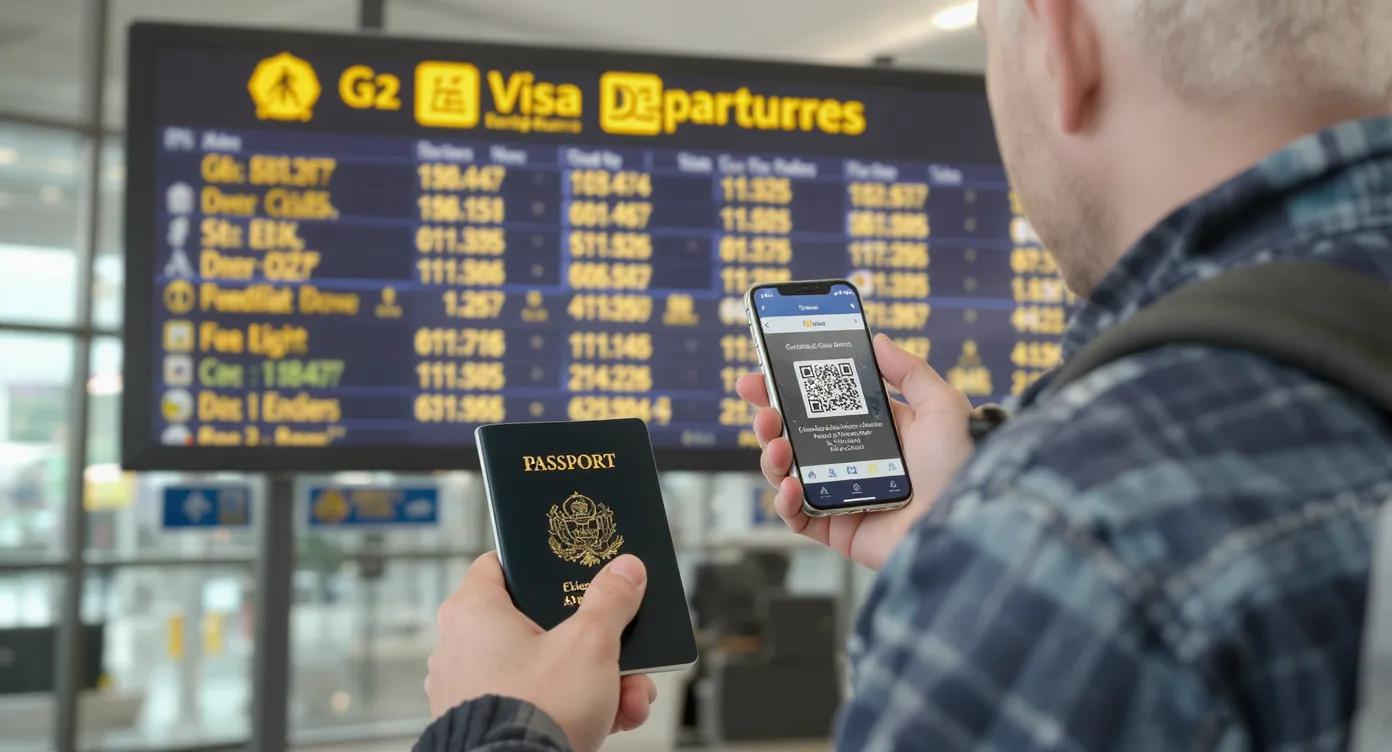Visa Requirements by Country: A Quick Reference

Planning an international trip always starts with one deceptively simple question – “Do I need a visa?” The answer depends on a handful of variables: your passport, destination, length of stay, and the purpose of travel. To help you cut through the complexity, we have compiled a current-as-of-October-2025 quick-reference guide that highlights visa requirements for some of the world’s most-visited destinations and explains how to verify the rules for every other country on your bucket list.
Tip: Rules change frequently. Always confirm with official government sources or a trusted service such as SimpleVisa before you book non-refundable flights or hotels.
How Visa Requirements Are Usually Categorized
Before diving into the country list, it helps to understand four common entry categories you will see when researching visa rules:
- Visa-free (or visa-exempt): No advance authorization required for short stays. You receive a simple passport stamp on arrival.
- Electronic Travel Authorization (eTA/ESTA/ETA): An online pre-screening for travelers who would otherwise enter visa-free. Takes minutes to complete, costs a modest fee, and is valid for multiple trips.
- Electronic Visa (eVisa): A full online visa that replaces the old paper sticker. Application is submitted digitally; approval typically arrives within a few days.
- Traditional consular visa: A physical label issued by an embassy or consulate after an in-person or mailed application (and sometimes an interview).
Understanding which bucket a destination falls into for your passport will dictate your lead time and paperwork.
Quick-Reference Table (Tourist Stays up to 90 Days)
| Destination | Passport Holders Who Usually Need a Visa | Fastest Option | Typical Processing Time | Max Stay Allowed |
|---|---|---|---|---|
| United States | Nearly all nationalities except 41 Visa Waiver Program countries | ESTA (VWP nationals) / B-2 visa | ESTA: minutes-72 h; B-2: 2–4 weeks+ |
ESTA: 90 days; B-2: up to 6 months |
| Schengen Area (ETIAS launches mid-2025) | Non-EU/EEA/Swiss nationals | ETIAS (visa-exempt) / National Schengen visa | ETIAS: minutes-96 h; Visa: 15 days+ |
ETIAS: 90 days in any 180; Visa: varies |
| United Kingdom | All non-UK/Irish nationals | UK ETA (visa-exempt) / Standard Visitor visa | ETA: <72 h; Visa: 3 weeks+ |
ETA: 6 months total; Visa: 6 months |
| Australia | Most foreign nationals | ETA/eVisitor / Visitor (Subclass 600) | ETA: minutes-24 h; 600: 3 weeks+ |
3 months per visit (ETA); up to 12 months (600) |
| Canada | Non-Canadian/U.S. nationals | eTA (visa-exempt by air) / Visitor visa | eTA: minutes-24 h; Visa: 3 weeks+ |
6 months |
| Japan | 70+ visa-exempt countries; others need a visa | Visa-free / eVisa (select nationalities) / Sticker visa | eVisa: ~5 days | 90 days |
| Türkiye | Many Western passports visa-free; others need eVisa or sticker | eVisa (for 40+ nationalities) | 5–30 min | 30–90 days |
| India | Most foreigners need a visa | eVisa (tourist / business) | 48–72 h | 30 days (single) or 1 year (multiple) |
| Brazil | Currently visa-free for EU/UK; eVisa requirement for U.S., Canada, Australia reinstated Jan 2025 | eVisa | ≤5 days | 90 days |
| Kenya | All travelers must apply online | eVisa (Kenya eTA from Sept 2024) | 24–72 h | 90 days |
Data compiled from official government portals and IATA Timatic, October 2025. Always double-check before travel.

Key Takeaways From the Table
- Electronic authorizations are now the norm in many top markets. The U.S. ESTA, EU ETIAS, UK ETA, Australian ETA/eVisitor, and Canadian eTA all follow a similar pattern: quick online form, small fee, multi-year validity.
- eVisas are expanding rapidly. India, Türkiye, Kenya, and Brazil (from 2025) let most tourists skip the embassy entirely. See our detailed list in “Countries That Accept Electronic Visa”.
- Visa-free doesn’t always mean paperwork-free. ETIAS and UK ETA illustrate how “pre-travel clearance” is becoming common even for historically visa-exempt travelers.
- Processing times vary by nationality. The estimates above assume an application with no issues for a popular passport (for example, U.S. or EU). Travelers from higher-risk or lower-income countries often face longer screening.
How to Check Requirements for Any Passport + Destination Pair
- Start with your passport. Note its expiration date (many countries demand six months’ validity). Dual citizens should pick the passport offering easier entry. Our guide “8 Tips for Navigating Electronic Visa Requirements for Dual Citizens” explains the trade-offs.
- Consult authoritative data. Reliable sources include:
- Government immigration websites (e.g., travel.state.gov, europa.eu/etias).
- IATA Timatic checkers used by airlines.
- Third-party visa platforms such as SimpleVisa that aggregate and keep rules current daily.
- Verify the purpose and length of stay. Tourist vs. business vs. study visas have different thresholds. Overstays can trigger fines or future denials.
- Apply as early as possible. Even “instant” systems can request secondary review. A 30-day buffer is ideal for consular visas; one week is prudent for eVisas/ETAs.
- Keep digital and printed copies. Some border officers still ask for physical printouts. See “Do You Need to Print an Electronic Visa?” for details.
Regional Highlights & 2025 Updates
Europe (Schengen + UK)
- ETIAS: Launches in phases from May 2025. U.S., Canadian, Australian, and many Latin American visitors must secure approval before boarding. The authorization is valid three years or until passport expiry.
- UK ETA: Already live for Qatari travelers; global roll-out completes by December 2025. Cost: £10. Stay limit: six months per visit.
Read “Cross-Border Travel After Brexit: eVisa Requirements You Need to Know” for a deeper dive.
Asia-Pacific
- Japan relaunched its eVisa portal in 2024 for selected nationalities (incl. U.S., Canada, UK, Australia) to cut consulate wait times.
- Australia requires an ETA (for 40+ passports) or eVisitor (EU)–both online and typically instant. Long stays need the Visitor 600 visa.
- Indonesia introduced a 60-day tourist eVisa-on-arrival extension in 2025, popular with digital nomads.
Americas
- United States: The ESTA fee increased to US$29 in May 2025 to fund inbound-tourism initiatives.
- Brazil resumes eVisa requirements 1 January 2025 for U.S., Canada, and Australia after a pandemic-era suspension.
- Mexico remains visa-free for many, but the Mexico Tourist Card (FMM) is now fully electronic in major airports to save paper.
Africa & Middle East
- Kenya and Uganda now operate regional East Africa eVisas that allow multi-country travel on one authorization.
- Saudi Arabia expanded its tourist eVisa to 63 nationalities and allows a free 96-hour transit stopover with mandatory hotel booking.

Common Pitfalls Travelers Still Face
- Assuming reciprocity. Just because your country offers visa-free entry doesn’t mean you receive the same privilege abroad.
- Forgetting transit rules. Some airports (e.g., Shanghai Pudong) require a transit visa for layovers longer than 24 hours or for leaving the sterile zone.
- Mismatching passports in bookings. The passport in your flight reservation must match the one you will use at the border, especially if your second nationality needs a visa.
- Using unofficial websites. Fake portals can overcharge or steal data. Learn how to spot them in “Electronic Visa Scams: How to Protect Yourself from Fraud”.
Frequently Asked Questions
Do I need an onward or return ticket to enter visa-free countries? Most destinations require proof of onward travel, even when no visa is needed. Airlines may deny boarding without it.
I’m a digital nomad. Can I work on a tourist eVisa? Generally no. Remote work is a legal gray area; some countries now offer specific “digital-nomad visas” with tax rules. Always check.
Can I extend an electronic visa after arrival? Some eVisas (e.g., India, Indonesia) allow in-country extensions via an online portal. Others (Australia ETA) do not. Our guide “How to Extend Your Stay with an Electronic Visa” explains the process.
How early should I apply for ETIAS or UK ETA? Both systems target approvals within minutes, but officials advise applying at least 72 hours before departure to resolve any hits against security databases.
Your Next Step: Simplify Visa Checks in Seconds
Spending hours cross-checking embassy PDFs is nobody’s idea of trip planning. With SimpleVisa, you enter your passport and destinations once and receive real-time visa requirements, fees, and application links. If an eVisa or ETA is available, you can complete the entire process without leaving the portal.
Ready to skip the paperwork and focus on the fun parts of travel? Try the SimpleVisa eligibility checker today and see how effortless border compliance can be.